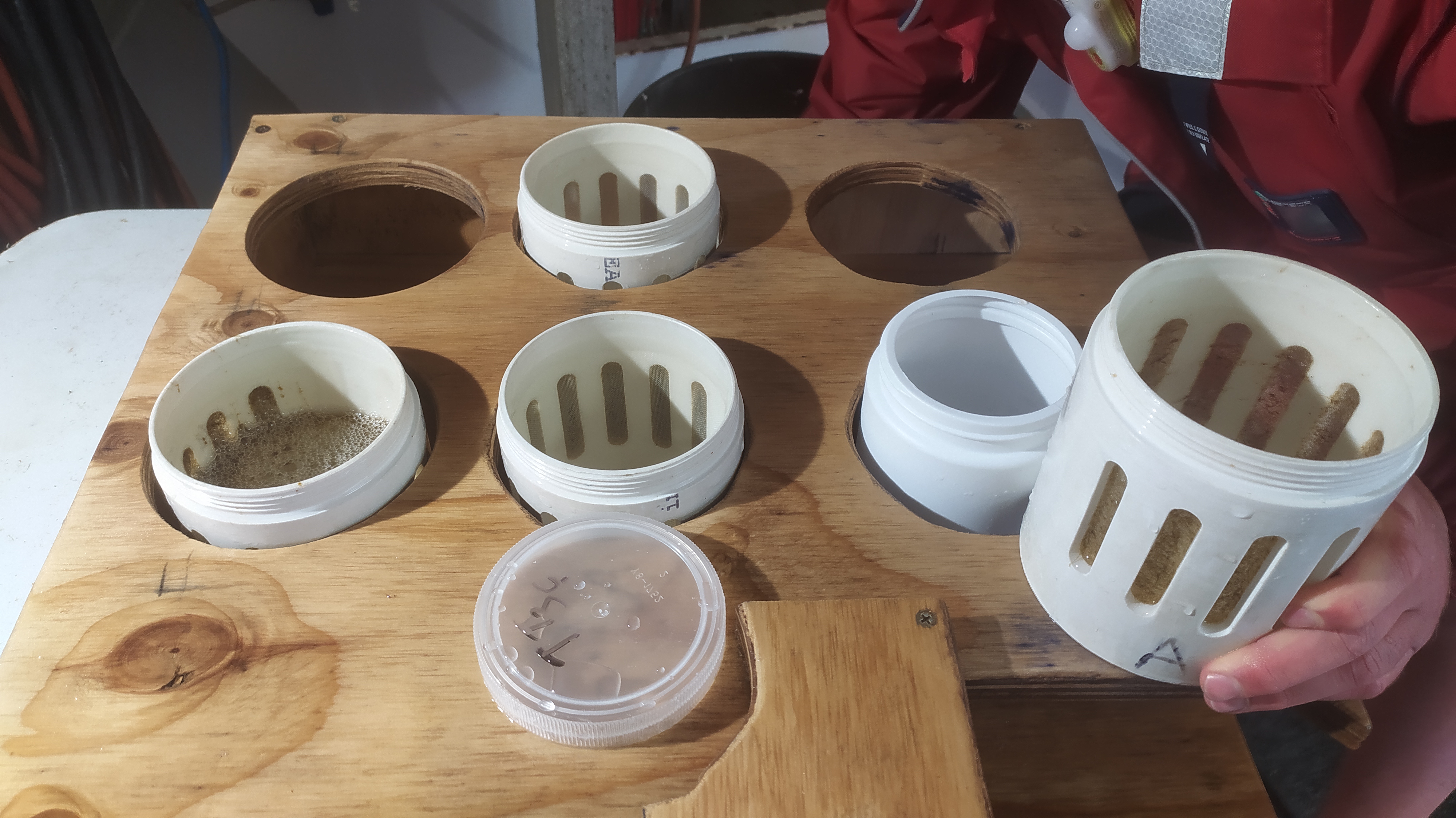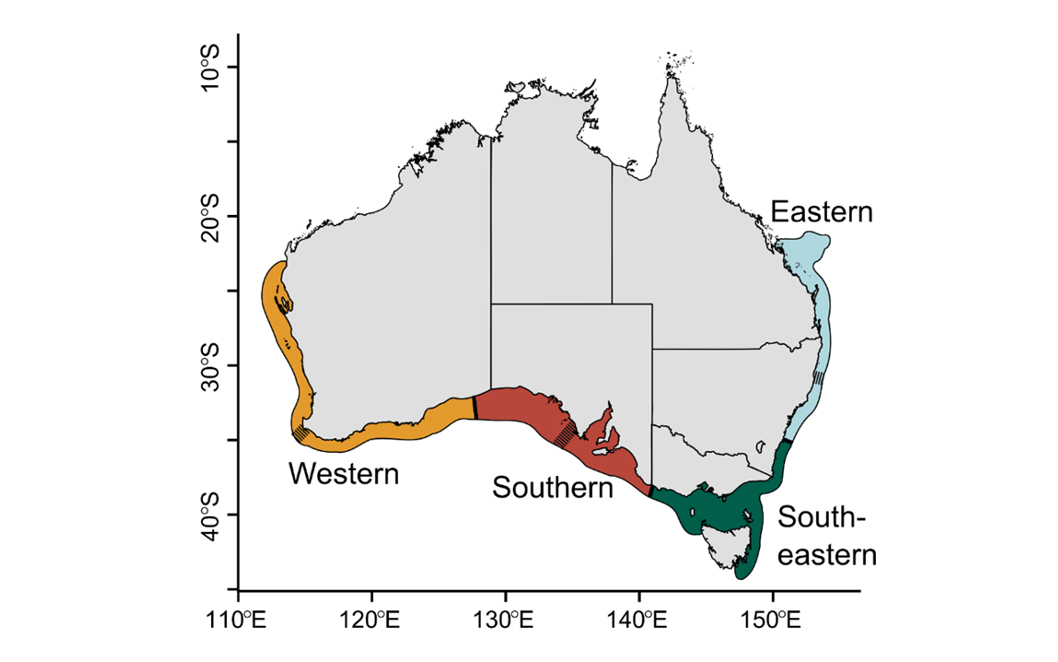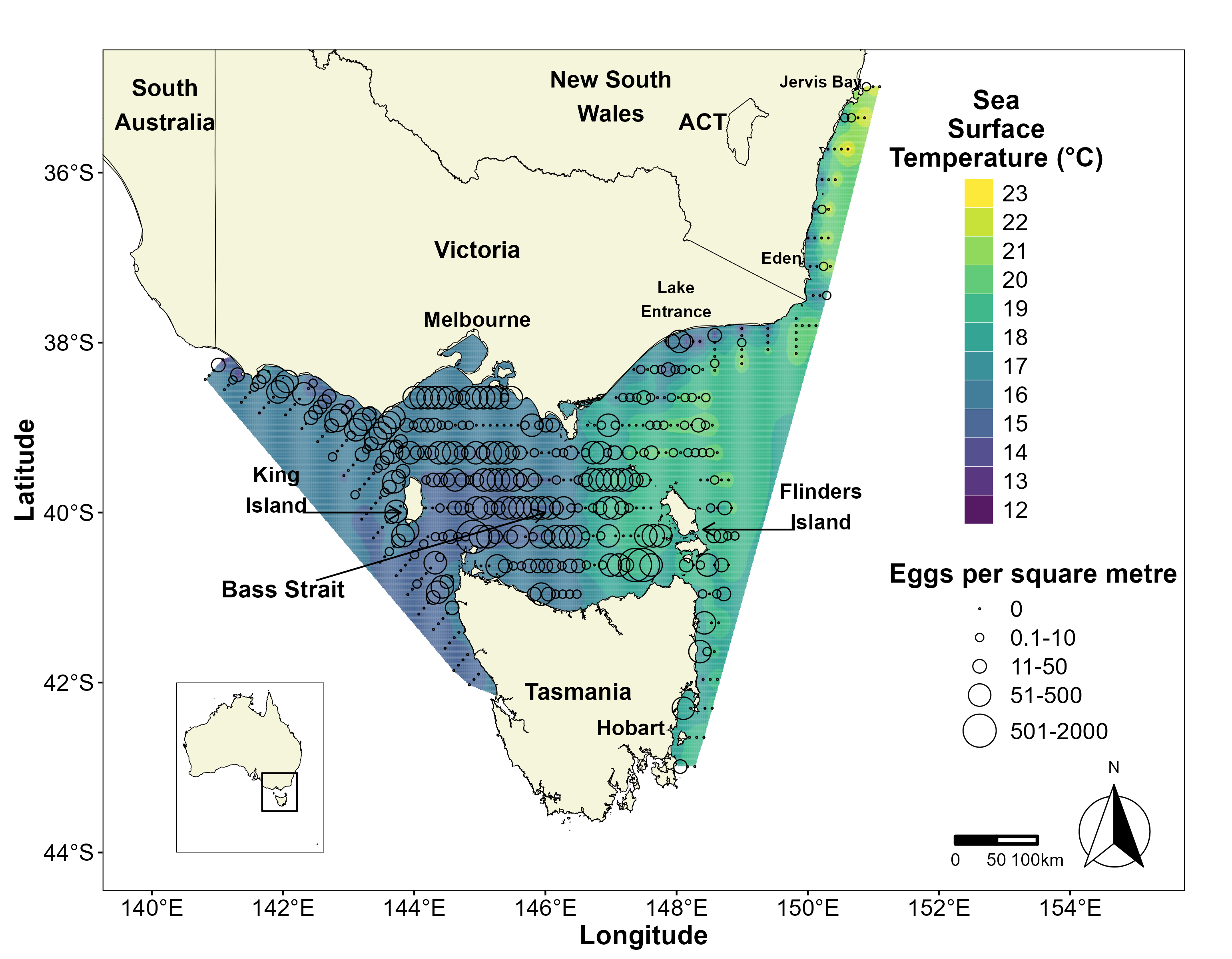The discovery of a large stock of Australian Sardine (Sardinops sagax), confirmed by the latest scientific research funded by FRDC, sets the stage for the development of a new commercial fishery.
By Catherine Norwood
The waters of Bass Strait support a rich stock of Australian Sardine. New research has confirmed a sardine biomass in the order of 200,000 tonnes – more than enough to support a new commercial fishery for Tasmania, even with a conservative harvesting approach.
On the back of this research, the Tasmanian Government has announced it will explore how to develop a sustainable sardine fishery that will minimise environmental impacts and maximise benefit to Tasmanians.

Minister for Business, Industry and Resources, Eric Abetz, says this is an exciting opportunity to develop the state’s first new commercial fishery in decades.
“Guidelines to support development of the management plan will be released before the end of the year,” says Minster Abetz. He emphasised that only purse seine fishing would be permitted, not trawling.
Associate Professor Tim Ward from the University of Tasmania’s Institute for Marine and Antarctic Studies (IMAS) led the first comprehensive assessment of the sardine stock.
The research was part of a collaborative project jointly funded by FRDC, Tasmania’s Department of Natural Resources and Environment and IMAS (2023-005) with collaborators from the South Australian Research and Development Institute (SARDI) and Deakin University.
Australia has four separate stocks of Sardine. The new research relates to the South-Eastern Stock, which stretches from southern NSW to the South Australian Victorian border (Figure 1).

Tim says the technique used to estimate the sardine biomass has been developed for the Southern Australian Sardine Stock in South Australia over the past 25 years and has established a high level of confidence among stakeholders.
“Over that time, millions of dollars have been invested in developing a reliable method to estimate the spawning biomass and understand the role of sardine in the ecosystem, including the potential impacts of harvesting a forage species on other parts of the food chain.
“That research has found negligible impact from sustainable harvesting,” says Tim. “In part, that is because the larger fish species and sea birds that feed on sardines have highly varied diets, so they’re not highly dependent on sardines as their main food sources. This research, has involved some of Australia’s leading marine scientists and addresses many of the concerns that have been raised by stakeholders.”
Estimating biomass
To estimate the biomass of sardines in the south-eastern stock, Tim and his team have used the daily egg production method (DEPM) where egg samples are collected from the water during spawning season. Knowing how many eggs a sardine can produce each day allows the researchers to calculate the total adult biomass.
The researchers found the largest sardine biomass occurred in Bass Strait, particularly on the western edge (Figure 2). While much of Bass Strait is technically Commonwealth waters, finfish fisheries in much of this area are managed by Tasmania under an offshore constitutional settlement.

The DEPM is also used to assess stocks of other small pelagic species. Tim says it was originally research into populations of Jack Mackerel (Trachurus declivis) funded by the Australian Fisheries Management Authority that first identified a potentially significant sardine biomass off Tasmania.

“Jack Mackerel spawns at the same time as sardine in the southeast, and we found large numbers of sardine eggs while we were sampling for Jack Mackerel in 2017 and 2019, which supported observations from local fishers,” explains Tim. “That led to the first comprehensive study of the spawning biomass of the South-Eastern Stock of Australian Sardine in the summer of 2023-24.”
The new research recommends a precautionary approach to developing the fishery, harvesting no more than 15 per cent of estimated adult biomass as a starting point. Allowing for stock variability between years, this could be in the order of 20,000 to 30,000 tonnes. Potential markets include human consumption and feed for the aquaculture sector.
More information about next steps in the development of a sardine fishery is expected to be available on the Fishing Tas website before the end of 2024.
Related FRDC Project
2023-005: Research to support the development of a Tasmanian Sardine Fishery





